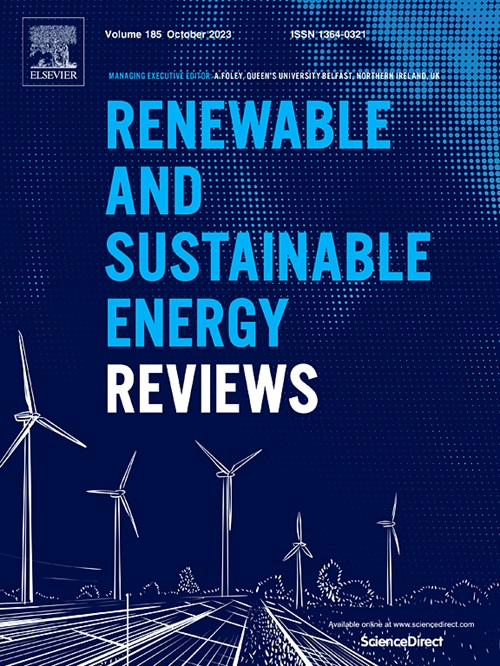Comprehensive performance assessment of two grid-tied photovoltaic systems in a hot arid climate: A three-year theoretical and experimental analysis
IF 16.3
1区 工程技术
Q1 ENERGY & FUELS
引用次数: 0
Abstract
This study presents the outcomes of a comparative performance evaluation of two PV systems connected to the grid with different technologies and mounting configurations following three years of operation in a hot and arid environment. The two systems were placed at the Applied Research Unit for Renewable Energy in Ghardaia, located in the central Sahara of Algeria. The first system consisted of a fixed a-Si/μc-Si PV system mounted on the rooftop car park. While the second system featured a pc-Si PV system mounted on a dual-axis sun tracker. The two PV station monitoring was conducted from January 2018 to December 2020. PV station performance variables such as final yield, reference yield, array yield, system losses, array capture losses, cell temperature losses, PV module efficiency, system efficiency, inverter efficiency, performance ratio, and capacity factor were all assessed. These factors were assessed on a monthly average daily. yearly. and seasonal basis. The simulation outcomes derived from Matlab Simulink. PVSyst, and PVGIS application are compared with the practical results of the two identical grid-tied PV systems employing different sun-tracking mechanisms and solar cell technologies. The findings of this study reveal a close alignment between the experimental data derived from the PV plant output and the predicted data generated by the PVSyst and PVGIS tools. In the years 2018, 2019, and 2020, the final annual yields for the fixed a-Si/μc-Si PV system and the dual-axis p-Si system were determined as follows: 3.86 kWh/kWp/6.68 kWh/kWp. 3.82 kWh/kWp/6.92 kWh/kWp. and 3.77 kWh/kWp/6.88 kWh/kWp. respectively. The annual performance ratios for the a-Si/μc-Si and 2-axis p-Si systems were observed to be 80.9 %–72.84 %. 79.96 %–75.35 %. and 79.22 %–74.9 % for the rooftop car park station and the twin-axis sun tracker PV plant during 2018. 2019, and 2020. respectively. Additionally, an economic analysis revealed that the payback period ranged from approximately 9 to 17 years.
求助全文
约1分钟内获得全文
求助全文
来源期刊

Renewable and Sustainable Energy Reviews
工程技术-能源与燃料
CiteScore
31.20
自引率
5.70%
发文量
1055
审稿时长
62 days
期刊介绍:
The mission of Renewable and Sustainable Energy Reviews is to disseminate the most compelling and pertinent critical insights in renewable and sustainable energy, fostering collaboration among the research community, private sector, and policy and decision makers. The journal aims to exchange challenges, solutions, innovative concepts, and technologies, contributing to sustainable development, the transition to a low-carbon future, and the attainment of emissions targets outlined by the United Nations Framework Convention on Climate Change.
Renewable and Sustainable Energy Reviews publishes a diverse range of content, including review papers, original research, case studies, and analyses of new technologies, all featuring a substantial review component such as critique, comparison, or analysis. Introducing a distinctive paper type, Expert Insights, the journal presents commissioned mini-reviews authored by field leaders, addressing topics of significant interest. Case studies undergo consideration only if they showcase the work's applicability to other regions or contribute valuable insights to the broader field of renewable and sustainable energy. Notably, a bibliographic or literature review lacking critical analysis is deemed unsuitable for publication.
 求助内容:
求助内容: 应助结果提醒方式:
应助结果提醒方式:


